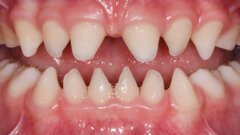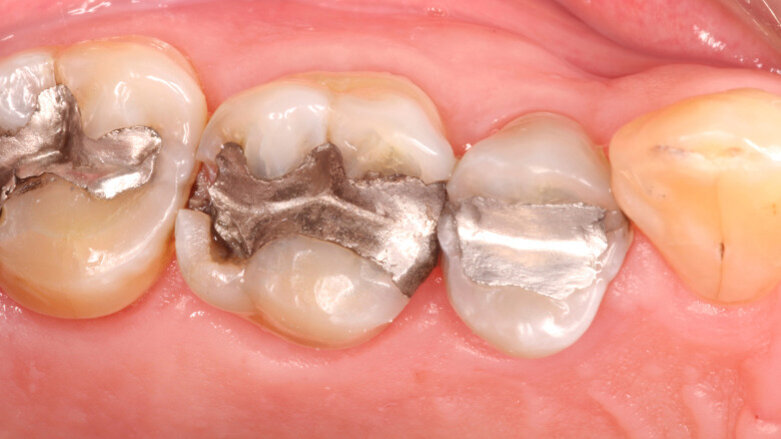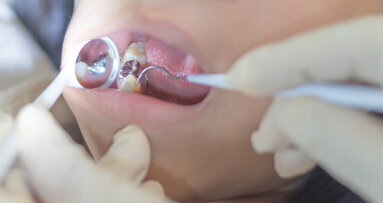CHAMPIONSGATE, Fla., U.S.: Dental amalgam accounted for 46.8% of the total elemental mercury that was used to make products in the U.S. in 2018, a report by the U.S. Environmental Protection Agency (EPA) has shown. In that year, 9,287 pounds (4,212 kg) of mercury was used for dental amalgam in the U.S.—enough for millions of mercury-containing tooth restorations, the EPA report found.
“What this means is that mercury-containing dental fillings placed into people’s mouths constitute the largest use of the elemental form of this toxic substance,” commented Dr. Jack Kall, executive chairperson of the board of directors of the International Academy of Oral Medicine and Toxicology (IAOMT), in a press release.
“Mercury has been banned from a gamut of other consumer products and a growing number of countries are ending the use of dental mercury. Yet, it’s still being routinely used in the U.S., and most American dental patients aren’t even aware that their silver-colored fillings contain this mercury,” Kall continued.
The EPA report found that 540,000 pounds of elemental mercury and mercury compounds was used in the U.S. in 2018; around 22,000 pounds was used to make products that contain mercury, such as dental amalgam, sensors and fluorescent lights. Dental amalgam is made up of around 50% of the element and is the largest source of human exposure to mercury, according to the United Nations Environment Programme.
The EPA report is the environmental watchdog’s first official inventory report on mercury supply, use and trade in the U.S. since it was mandated to publish such reports in June 2018, under the requirements of the Toxic Substances Control Act. The IAOMT has publicized the report in order to draw attention to the use of what it called a known neurotoxin.
The U.S. Food and Drug Administration considers dental amalgam restorations to be safe for adults and children over the age of 6
Since its founding in 1984, the IAOMT has examined the use of dental amalgam and provided information about the health risks to patients, dental professionals and the environment posed by its use. One of the resources it has made public is the Safe Mercury Amalgam Removal Technique, a set of recommendations that includes information about the release of mercury during the removal of dental amalgam restorations.
The EPA states on its website that the U.S. Food and Drug Administration considers dental amalgam restorations to be safe for adults and children over the age of 6.
What about the Minamata Convention?
The Minamata Convention on Mercury is a United Nations treaty that aims to protect human health and the environment from the harm caused by mercury emissions and compounds. It was first signed in October 2013, and 119 countries of the original 128 signatories have ratified it, including the U.S.
The treaty recognizes dental amalgam as a leading use of mercury in products, but parties have differed in their opinions on the phasing out of its use in dentistry. The European Union aligned its regulations to the convention by banning the use of dental amalgam restorations for breastfeeding women (unless medically necessary) and for children aged under 15. The ban came into effect in 2018.
A proposal by African countries for a global phasing out by 2024 of the use of dental amalgam for children aged under 15 and breastfeeding women was mooted at the last meeting of the conference of the parties (COP) to the convention, in November 2019. Concerns were reportedly raised about the timeline put forward within the proposal, and the parties agreed to reconsider the issue at the next COP meeting, which is to be held in 2021.
Tags:
HANNA, Alberta, Canada: Dental amalgam has been used for almost two centuries. Now, a recently published paper has investigated the amount of exposure to ...
QUEZON CITY, Philippines: The Philippines Chapter of the International Academy of Oral Medicine and Toxicology was founded by Dr Lillian Lasaten-Ebuen in ...
WOMBOURNE, UK: In times of SARS-CoV-2, dentists are taking unusual measures to ensure that their patients receive medical care despite contact restrictions ...
TEL AVIV, Israel: The COVID-19 pandemic has resulted in the closure of most dental clinics in Israel, and a nationwide lockdown is in effect for the ...
CHICAGO, US: Dentistry is undergoing a generational and gender shift. As highlighted in The U.S. Dentist Workforce, a new report from the American Dental ...
MORTSEL, Belgium: After two decades of practising dentistry, Dr Veronica Stahl became frustrated about the lack of consumer products that combat dental ...
NEW YORK, U.S.: Dentists in the U.S. now find themselves at the epicenter of a pandemic, as they are being called upon to provide urgent assistance to slow ...
JAKARTA, Indonesia: The Indonesian Medical Association has confirmed that 24 medical professionals have died in the country from COVID-19, six of whom were ...
Advances in technology in dentistry have rapidly improved diagnostics, streamlined treatments and made the dental chair a safer, more comfortable place. ...
CHARLOTTE, N.C., U.S.: The multinational dental company Dentsply Sirona will exit the traditional orthodontics business and reduce its activities in analog ...
Live webinar
Wed. 14 January 2026
12:00 pm EST (New York)
Dr. Théo Laplane, Dr. Robert Gottlander DDS
Live webinar
Fri. 16 January 2026
12:00 pm EST (New York)
Live webinar
Mon. 19 January 2026
1:00 pm EST (New York)
Philipp Kopp, Michael Seeber
Live webinar
Thu. 22 January 2026
9:00 am EST (New York)
Prof. Judith Jones D.D.S; M.P.H., Prof. Kakuhiro Fukai D.D.S., Ph.D, Dr. Bathsheba (Bethy) Turton
Live webinar
Thu. 22 January 2026
2:00 pm EST (New York)
Dr. Nicola M. Grande DDS, PhD
Live webinar
Wed. 28 January 2026
8:00 am EST (New York)
Live webinar
Wed. 28 January 2026
11:00 am EST (New York)
Prof. Dr. Jan-Frederik Güth



 Austria / Österreich
Austria / Österreich
 Bosnia and Herzegovina / Босна и Херцеговина
Bosnia and Herzegovina / Босна и Херцеговина
 Bulgaria / България
Bulgaria / България
 Croatia / Hrvatska
Croatia / Hrvatska
 Czech Republic & Slovakia / Česká republika & Slovensko
Czech Republic & Slovakia / Česká republika & Slovensko
 France / France
France / France
 Germany / Deutschland
Germany / Deutschland
 Greece / ΕΛΛΑΔΑ
Greece / ΕΛΛΑΔΑ
 Hungary / Hungary
Hungary / Hungary
 Italy / Italia
Italy / Italia
 Netherlands / Nederland
Netherlands / Nederland
 Nordic / Nordic
Nordic / Nordic
 Poland / Polska
Poland / Polska
 Portugal / Portugal
Portugal / Portugal
 Romania & Moldova / România & Moldova
Romania & Moldova / România & Moldova
 Slovenia / Slovenija
Slovenia / Slovenija
 Serbia & Montenegro / Србија и Црна Гора
Serbia & Montenegro / Србија и Црна Гора
 Spain / España
Spain / España
 Switzerland / Schweiz
Switzerland / Schweiz
 Turkey / Türkiye
Turkey / Türkiye
 UK & Ireland / UK & Ireland
UK & Ireland / UK & Ireland
 Brazil / Brasil
Brazil / Brasil
 Canada / Canada
Canada / Canada
 Latin America / Latinoamérica
Latin America / Latinoamérica
 USA / USA
USA / USA
 China / 中国
China / 中国
 India / भारत गणराज्य
India / भारत गणराज्य
 Pakistan / Pākistān
Pakistan / Pākistān
 Vietnam / Việt Nam
Vietnam / Việt Nam
 ASEAN / ASEAN
ASEAN / ASEAN
 Israel / מְדִינַת יִשְׂרָאֵל
Israel / מְדִינַת יִשְׂרָאֵל
 Algeria, Morocco & Tunisia / الجزائر والمغرب وتونس
Algeria, Morocco & Tunisia / الجزائر والمغرب وتونس
 Middle East / Middle East
Middle East / Middle East
















































Tenho ainda em estoque cápsulas de Amálgama para uso, mas se tornou “fora de moda” aqui no Brasil restaurar dentes com esse material. Apesar de sua segurança, longevidade, os pacientes se recusam a ser tratados com essa alternativa. No início de minha carreira há 32 anos 60% das restaurações levavam o amálgama, hoje não chega a 0,5% . A “ditadura” da Estética e do risco de contaminação com o mercúrio baniu dos consultórios brasileiros essa opção barata e longeva. De vez em quando em consulta de rotina, ainda deparo com minhas restaurações de 30 ou mais anos em perfeitas condições. Não vejo tal desempenho com as Resinas Compostas, infelizmente estamos perdendo um grande aliado.